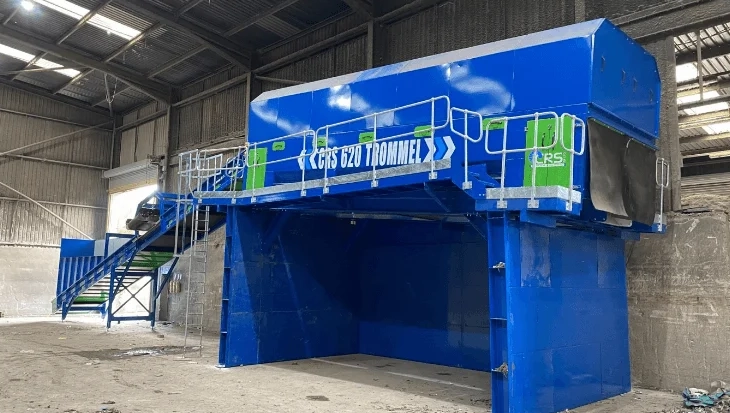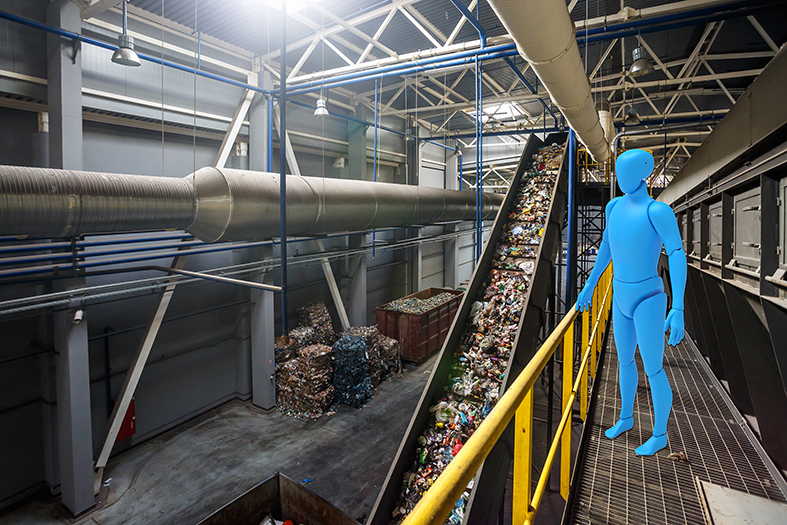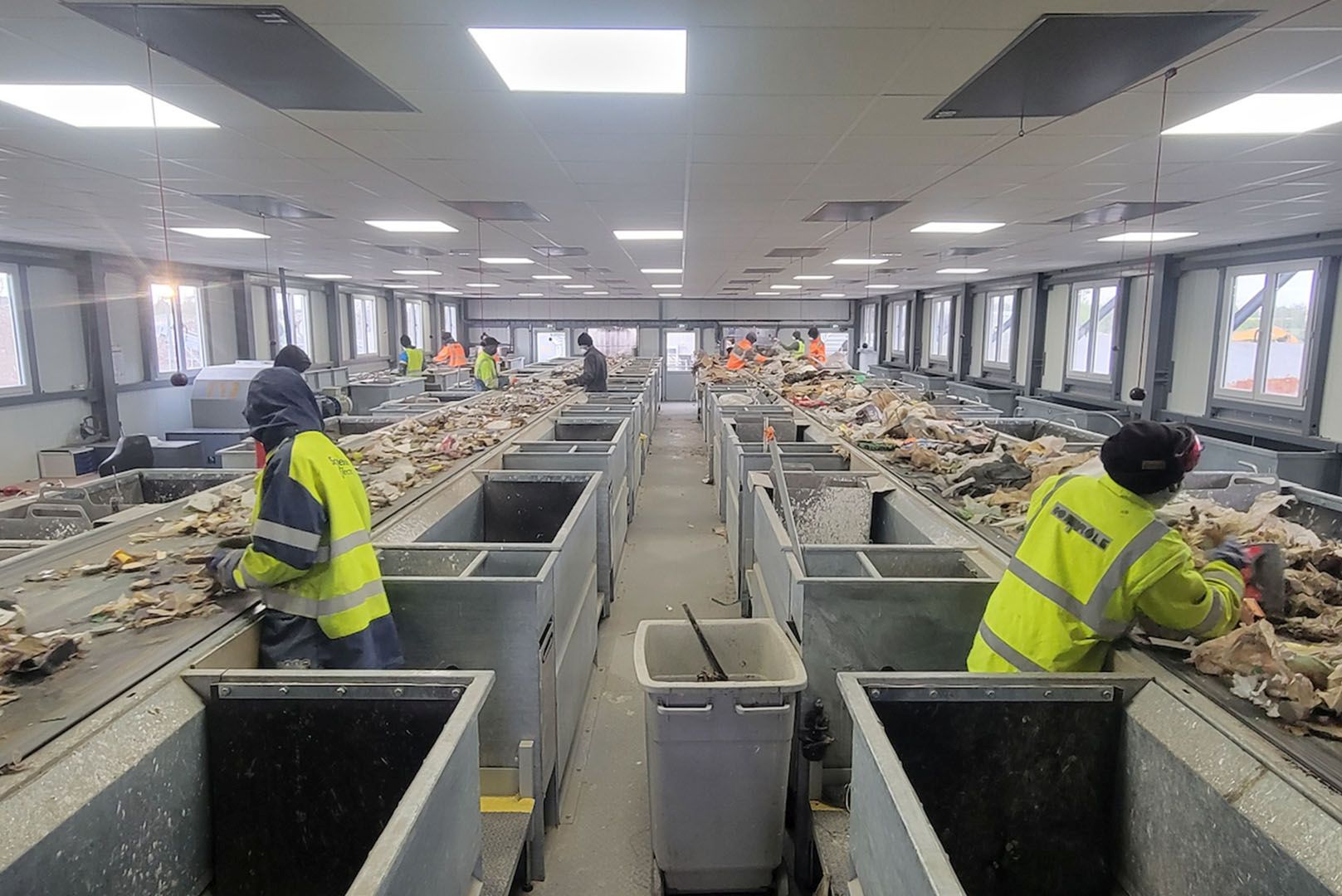Mobile vs. Stationary Waste Equipment: Which Is Right for Your Plant?
Choosing the right waste recycling equipment is one of the most critical decisions for any waste management facility. The choice between mobile and stationary waste equipment depends on various factors, including the type of waste processed, operational needs, and long-term goals. Each option offers distinct benefits, and understanding these differences can help you make the best decision for your plant.
Choosing the right waste recycling equipment is one of the most critical decisions for any waste management facility. The choice between mobile and stationary waste equipment depends on various factors, including the type of waste processed, operational needs, and long-term goals. Each option offers distinct benefits, and understanding these differences can help you make the best decision for your plant.
At CRS NI, we specialise in delivering both mobile and fixed waste systems, tailored to meet the unique challenges of waste management and recycling plants worldwide. Let’s explore the key differences and help you determine which solution is the best fit for your operations.
Understanding Their Applications
Mobile waste processing stations are designed for flexibility. They shine in scenarios where waste streams vary, such as temporary projects, remote locations, or facilities with multiple sites. A construction project in a remote area, for instance, might require quick deployment and easy relocation to handle varying waste volumes effectively.
In contrast, fixed waste systems or stationary waste systems are built for consistency and scale. Recycling plants that process high, steady volumes of materials like C&D, C&I, or MDR benefit from the robust, customisable capabilities of stationary systems. They integrate seamlessly into permanent operations, making them the go-to choice for centralised plants that handle complex sorting or require advanced automation.
Evaluating Costs
When it comes to upfront investment, mobile waste recycling systems tend to be more accessible. Its modular design and ease of deployment make it an attractive option for facilities with tighter budgets or those just entering the waste management industry. However, operational costs can be higher due to factors like fuel for relocation and the wear-and-tear associated with frequent transportation.
Stationary waste equipment, on the other hand, demands a larger initial outlay. The design and installation process often include tailored features to suit the plant’s specific layout and processing needs. While this means a higher upfront cost, the long-term operational savings and higher throughput efficiency often result in a greater return on investment.
Maintenance: The Key to Longevity
Maintenance demands differ significantly between mobile and stationary waste systems. Mobile equipment, exposed to constant relocation and variable site conditions, typically requires more frequent but straightforward servicing. Its components are often modular, making repairs quicker and less intrusive.
In contrast, stationary waste systems are engineered for durability, often requiring less frequent maintenance. However, when servicing is needed, repairs can take longer due to the larger and more integrated nature of the systems. This trade-off is offset by the reduced risk of downtime in a controlled environment.
The Benefits of Mobile Waste Systems
Mobile waste systems are designed for flexibility, making it ideal for operations that demand versatility and adaptability.
- Ease of Deployment
Mobile waste equipment can be moved and set up quickly, allowing you to respond to changing operational needs or manage waste in multiple locations. This makes it perfect for smaller sites or temporary projects. - Cost-Effective for Short-Term Use
For facilities handling seasonal waste streams or undertaking pilot projects, mobile equipment offers an efficient, low-commitment solution. - Compact Design for Space Efficiency
With a smaller footprint than stationary systems, mobile waste equipment is an excellent choice for facilities with limited space or for on-site processing at remote locations. - Reduced Initial Investment
Mobile waste systems generally involve a lower upfront cost compared to stationary systems, making them accessible for facilities with tight budgets.
The Advantages of Stationary Waste Systems
Stationary or fixed waste equipment is the go-to solution for facilities with long-term, high-volume processing needs.
- High Throughput Capacity
Designed for larger operations, stationary waste systems handle higher waste volumes efficiently, making them ideal for facilities with steady, high-demand waste streams. - Customisable for Specific Requirements
Stationary equipment can be tailored to your plant’s exact needs, ensuring optimal performance for your unique materials and processes. - Durability and Longevity
Built for long-term operation, stationary waste systems offer unmatched reliability, making them a solid investment for facilities focused on consistent, high-volume output. - Enhanced Automation
Stationary waste systems often integrate advanced automation technologies, reducing manual labour and streamlining operations.
Key Considerations When Choosing Between Mobile and Stationary Waste Systems
When deciding between mobile and stationary waste equipment, consider the following:
- Operational Scale: Large-scale facilities benefit from the capacity and durability of stationary systems, while smaller or multi-location sites may find mobile solutions more practical.
- Material Types: Complex or high-volume waste streams often require the customisation and efficiency of stationary equipment.
- Budget and ROI: Mobile waste systems involve a lower upfront cost, while stationary waste systems offer long-term value through durability and scalability.
- Space Availability: Limited space or remote locations may make mobile waste systems more appealing.
CRS NI: Helping You Make the Right Choice in Waste Management
Selecting the ideal solution comes down to aligning your plant’s priorities with the capabilities of each system. If your operations demand flexibility, rapid deployment, or the ability to process waste in multiple locations, mobile equipment may be the perfect fit. For plants focusing on high-capacity, long-term operations with a need for advanced automation, stationary systems are unmatched.
At CRS NI, we provide both static and mobile waste management systems according to your needs. Take a look at our products and let our experts help you make the right choice. Get in touch with CRS NI today to discuss your plant’s requirements, and let’s find the perfect solution to drive your waste management success.
Recent Posts

Trommel Screens: Reliable Separation for Demanding Applications
In modern recycling and waste management operations, trommel screens play a vital role in material separation and processing efficiency. At CRS NI, our trommel systems are engineered for performance, durability, and versatility — designed to handle a wide range of materials, including construction and demolition waste, commercial and industrial waste, mixed dry recyclables, WEEE, gypsum, compost, and auto shredder residue (ASR). In this article, we explore what a trommel is, how it works, where it’s used, and why operators benefit from our heavy-duty trommel screens.

The Role of AI and Robotics in the Future of Waste Management
The waste management industry is undergoing a technological revolution. With growing demand for efficient, sustainable recycling, AI-powered systems and robotics are transforming how facilities sort, process, and recover materials. At CRS NI, we are leading the way with integrated automated solutions that improve throughput, reduce contamination, and increase operational efficiency.

Automated Machinery vs. Manual Picking: What’s Right for Your Recycling Operation?
Every recycling plant faces the same pressure: improve recovery rates, reduce costs, and keep operators safe. But when it comes to sorting materials, is it better to invest in automated machinery — or stick with manual picking? Here’s a closer look at the key differences, and how to choose the right solution for your site.

5 Signs Your Waste Sorting System Is Holding You Back
If you're running a waste processing plant, your system is your business. But even solid setups can become bottlenecks over time. Whether you’re working with C&D, C&I, MDR, gypsum, or WEEE, here are five clear signs it’s time to consider an upgrade — and how CRS NI can help you get more out of every tonne.

